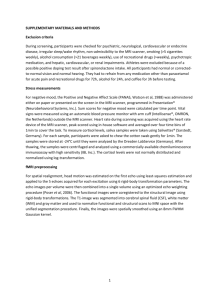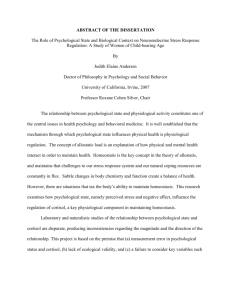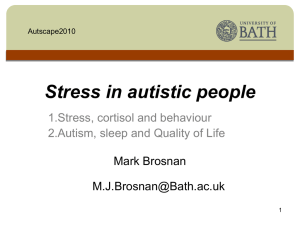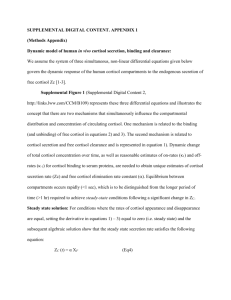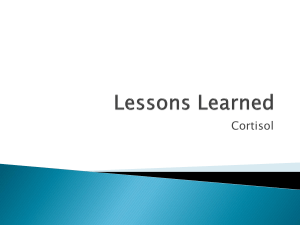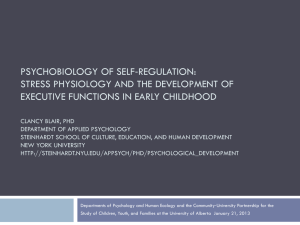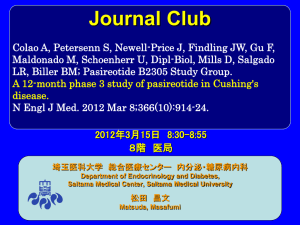Social Anxiety and Cortisol Reactivity are Related but do not Interact
advertisement
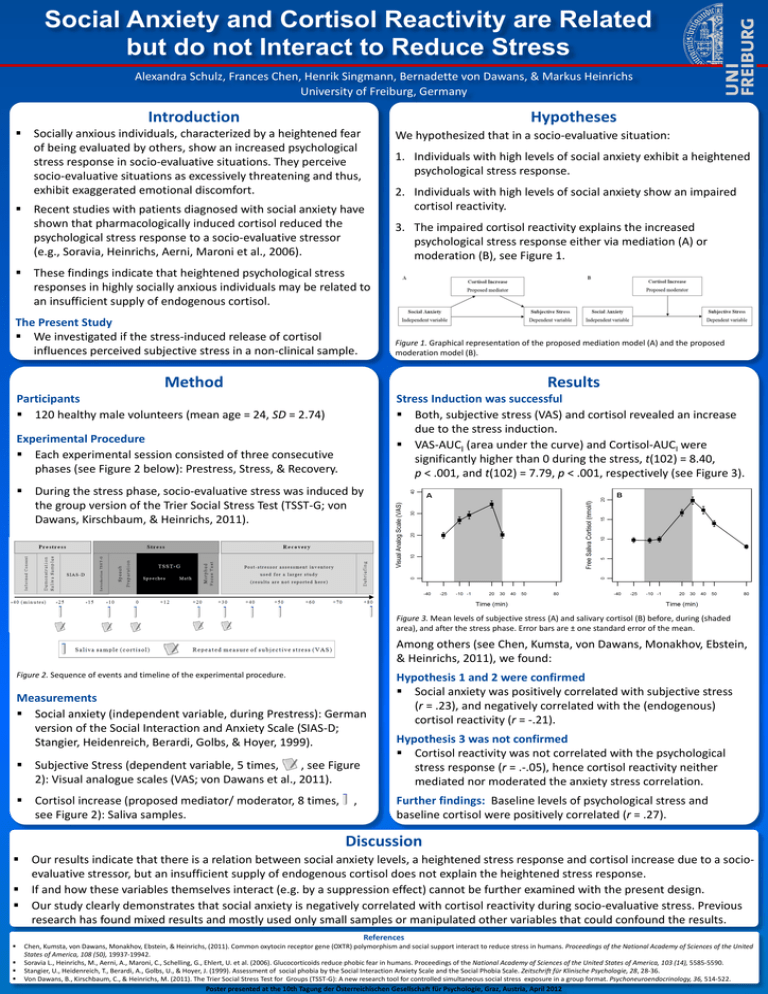
Social Anxiety and Cortisol Reactivity are Related but do not Interact to Reduce Stress Alexandra Schulz, Frances Chen, Henrik Singmann, Bernadette von Dawans, & Markus Heinrichs University of Freiburg, Germany Introduction Hypotheses Socially anxious individuals, characterized by a heightened fear of being evaluated by others, show an increased psychological stress response in socio-evaluative situations. They perceive socio-evaluative situations as excessively threatening and thus, exhibit exaggerated emotional discomfort. We hypothesized that in a socio-evaluative situation: 1. Individuals with high levels of social anxiety exhibit a heightened psychological stress response. Recent studies with patients diagnosed with social anxiety have shown that pharmacologically induced cortisol reduced the psychological stress response to a socio-evaluative stressor (e.g., Soravia, Heinrichs, Aerni, Maroni et al., 2006). 2. Individuals with high levels of social anxiety show an impaired cortisol reactivity. 3. The impaired cortisol reactivity explains the increased psychological stress response either via mediation (A) or moderation (B), see Figure 1. These findings indicate that heightened psychological stress responses in highly socially anxious individuals may be related to an insufficient supply of endogenous cortisol. no relationship between social phobia and the psychological stress response for people with a high cortisol increase. The Present Study We investigated if the stress-induced release of cortisol influences perceived subjective stress in a non-clinical sample. Figure 1. Graphical representation of the proposed mediation model (A) and the proposed moderation model (B). Method Results Participants 120 healthy male volunteers (mean age = 24, SD = 2.74) Stress Induction was successful Both, subjective stress (VAS) and cortisol revealed an increase due to the stress induction. VAS-AUCI (area under the curve) and Cortisol-AUCI were significantly higher than 0 during the stress, t(102) = 8.40, p < .001, and t(102) = 7.79, p < .001, respectively (see Figure 3). Experimental Procedure Each experimental session consisted of three consecutive phases (see Figure 2 below): Prestress, Stress, & Recovery. During the stress phase, socio-evaluative stress was induced by the group version of the Trier Social Stress Test (TSST-G; von Dawans, Kirschbaum, & Heinrichs, 2011). Figure 3. Mean levels of subjective stress (A) and salivary cortisol (B) before, during (shaded area), and after the stress phase. Error bars are ± one standard error of the mean. Among others (see Chen, Kumsta, von Dawans, Monakhov, Ebstein, & Heinrichs, 2011), we found: Figure 2. Sequence of events and timeline of the experimental procedure. Measurements Social anxiety (independent variable, during Prestress): German version of the Social Interaction and Anxiety Scale (SIAS-D; Stangier, Heidenreich, Berardi, Golbs, & Hoyer, 1999). Hypothesis 1 and 2 were confirmed Social anxiety was positively correlated with subjective stress (r = .23), and negatively correlated with the (endogenous) cortisol reactivity (r = -.21). Subjective Stress (dependent variable, 5 times, , see Figure 2): Visual analogue scales (VAS; von Dawans et al., 2011). Hypothesis 3 was not confirmed Cortisol reactivity was not correlated with the psychological stress response (r = .-.05), hence cortisol reactivity neither mediated nor moderated the anxiety stress correlation. Cortisol increase (proposed mediator/ moderator, 8 times, see Figure 2): Saliva samples. Further findings: Baseline levels of psychological stress and baseline cortisol were positively correlated (r = .27). , Discussion Our results indicate that there is a relation between social anxiety levels, a heightened stress response and cortisol increase due to a socioevaluative stressor, but an insufficient supply of endogenous cortisol does not explain the heightened stress response. If and how these variables themselves interact (e.g. by a suppression effect) cannot be further examined with the present design. Our study clearly demonstrates that social anxiety is negatively correlated with cortisol reactivity during socio-evaluative stress. Previous research has found mixed results and mostly used only small samples or manipulated other variables that could confound the results. References Chen, Kumsta, von Dawans, Monakhov, Ebstein, & Heinrichs, (2011). Common oxytocin receptor gene (OXTR) polymorphism and social support interact to reduce stress in humans. Proceedings of the National Academy of Sciences of the United States of America, 108 (50), 19937-19942. Soravia L., Heinrichs, M., Aerni, A., Maroni, C., Schelling, G., Ehlert, U. et al. (2006). Glucocorticoids reduce phobic fear in humans. Proceedings of the National Academy of Sciences of the United States of America, 103 (14), 5585-5590. Stangier, U., Heidenreich, T., Berardi, A., Golbs, U., & Hoyer, J. (1999). Assessment of social phobia by the Social Interaction Anxiety Scale and the Social Phobia Scale. Zeitschrift für Klinische Psychologie, 28, 28-36. Von Dawans, B., Kirschbaum, C., & Heinrichs, M. (2011). The Trier Social Stress Test for Groups (TSST-G): A new research tool for controlled simultaneous social stress exposure in a group format. Psychoneuroendocrinology, 36, 514-522. Poster presented at the 10th Tagung der Österreichischen Gesellschaft für Psychologie, Graz, Austria, April 2012


